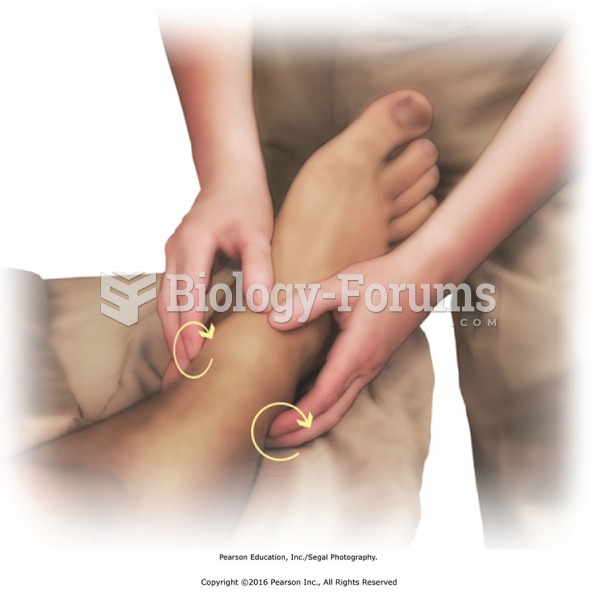|
|
|
Anti-aging claims should not ever be believed. There is no supplement, medication, or any other substance that has been proven to slow or stop the aging process.
Cutaneous mucormycosis is a rare fungal infection that has been fatal in at least 29% of cases, and in as many as 83% of cases, depending on the patient's health prior to infection. It has occurred often after natural disasters such as tornados, and early treatment is essential.
Your skin wrinkles if you stay in the bathtub a long time because the outermost layer of skin (which consists of dead keratin) swells when it absorbs water. It is tightly attached to the skin below it, so it compensates for the increased area by wrinkling. This happens to the hands and feet because they have the thickest layer of dead keratin cells.
People about to have surgery must tell their health care providers about all supplements they take.
All adults should have their cholesterol levels checked once every 5 years. During 2009–2010, 69.4% of Americans age 20 and older reported having their cholesterol checked within the last five years.
 How many potential risks to the health of the embryo and fetus might a mother encounter in an urban ...
How many potential risks to the health of the embryo and fetus might a mother encounter in an urban ...
 Basic sliding effleurage using the thumb gets into the small spaces between the metatarsals of the ...
Basic sliding effleurage using the thumb gets into the small spaces between the metatarsals of the ...





